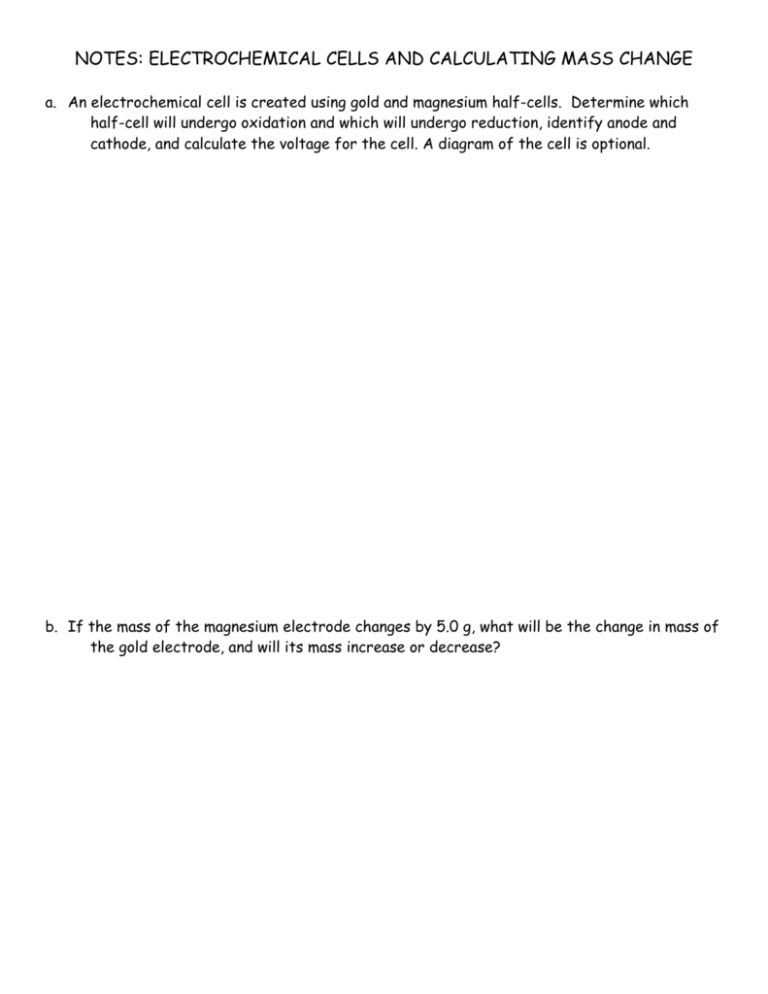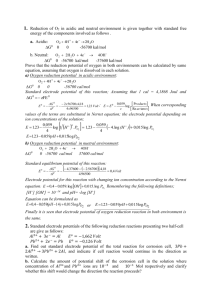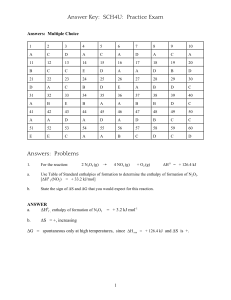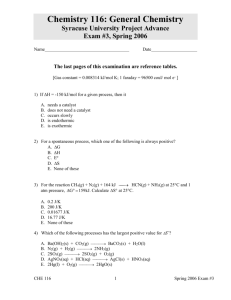Electrochemical Cells & Mass Change Calculations
advertisement

NOTES: ELECTROCHEMICAL CELLS AND CALCULATING MASS CHANGE a. An electrochemical cell is created using gold and magnesium half-cells. Determine which half-cell will undergo oxidation and which will undergo reduction, identify anode and cathode, and calculate the voltage for the cell. A diagram of the cell is optional. b. If the mass of the magnesium electrode changes by 5.0 g, what will be the change in mass of the gold electrode, and will its mass increase or decrease? NOTES: ELECTROCHEMICAL CELLS AND CALCULATING MASS CHANGE a. An electrochemical cell is created using gold and magnesium half-cells. Determine which half-cell will undergo oxidation and which will undergo reduction, identify anode and cathode, and calculate the voltage for the cell. You do not need to diagram the cell. balance for ecathode anode reduction oxidation 2 3 E (V) Au3+ + 3e- Au(s) Mg (s) Mg2+ + 2 e- +1.50 +2.37 3Mg(s) + 2Au3+ 2Au(s) + 3Mg2+ +3.87 + electrode - electrode b. If the mass of the magnesium electrode changes by 5.0 g, what will be the change in mass of the gold electrode, and will its mass increase or decrease? The balanced equation is required: 3Mg(s) + 2Au3+ 2Au(s) + 3Mg2+ From this equation we see that 3 moles of Mg react with 2 moles of Au to give us the ratio 3Mg 2Au Since the question concerns mass, we will need to know the molar masses of each element, in order to convert between moles and mass. Molar masses are equivalent to atomic masses, found in the periodic table. The unit for molar mass is g/mol molar mass of Mg = 24 .3g mol Mg molar mass of Au = 197.0g mol Au The question gives us the mass of Mg and asks us to find mass of Au. Set up the equation so that all units will cancel except g Au (mass of Au): g Au 5.0 g Mg 1 mol Mg 197 .0 g 2 mol Au 27.0g Au 24.3 g mol Au 3 mol Mg The mass of gold will change by 27.0 g. Our half-reactions tell us that gold ions combine with gold ions to produce solid gold. Thus our gold electrode will increase it’s mass by 27.0 g.











